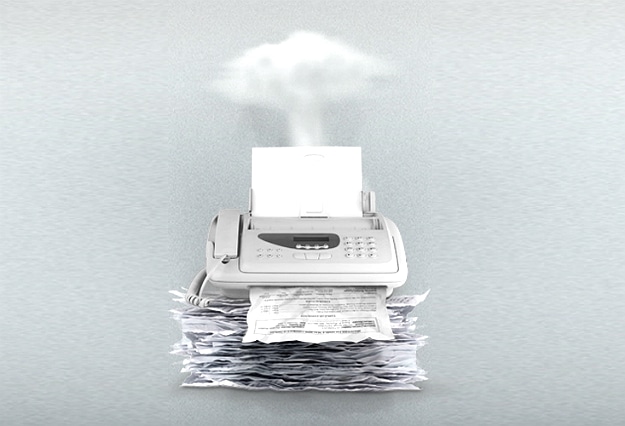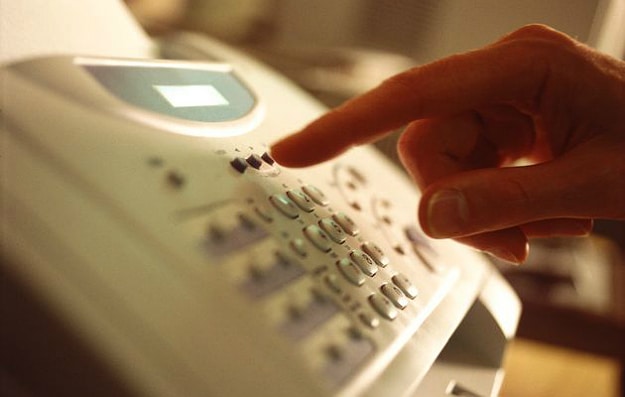For nearly a decade, experts and pundits alike have declared, “the fax is dead” and it’s easy to see where they are coming from. Thanks to email and document-sharing services, the need to send faxes has diminished greatly in recent years. Why go to the trouble of faxing when you can just send an attachment via email?
However, while many machines are gathering dust, there is still a need to send faxes. The fact is, faxing isn’t dead, it’s just evolved. New technologies have made it possible to enjoy all of the benefits of faxing, with fewer hassles.
In this article we are going to take a closer look at why the fax machine is very much alive today and how faxing has been evolved into cloud technology that could save you and your company a whole lot of time and money.
Why Faxing Is Still Important
You might be sitting there thinking, “Who needs to send faxes? Isn’t email good enough?” The short answer is that no, in some cases, email isn’t the right choice for sending documents, for several reasons.
• Security – In some sectors, particularly health care, finance and law, businesses are governed by strict compliance regulations regarding the protection of data. Regulations like HIPPA, PCI-DSS, Sarbanes-Oxley, and a host of other rules require that businesses follow certain protocols to ensure the legality of documents. This is because in those industries, documents that are faxed are legally binding; the signatures on faxed documents are treated the same as in-person signatures, while electronic signatures aren’t always accepted.
• Confirmations – Another important security protocol under certain regulations is that when sending certain documents, the sender must have confirmation that the message was delivered successfully — something that automatically happens when a fax is sent. The receiving machine will send a confirmation, helping the sender to remain in compliance.
• Global reach – In some parts of the world, faxing is still the standard means of business communication. Cloud technologies are still evolving and taking hold in some regions, so in the meantime, the fax is still vital for anyone doing business overseas.
In short, for many businesses, faxing is still a part of doing business, but that doesn’t mean they are doing it the same way they always have.
Enter Cloud Faxing
In most offices, the traditional fax machine is connected to a dedicated phone line, or operates via a dedicated server, so that employees can send faxes directly from their computers or a multi-function printer or copier. In either case, the faxing infrastructure requires a significant investment, in terms of equipment and in the time it takes to manage and maintain it.
Cloudfax solutions, on the other hand, are generally quite simple. Most operate as SaaS and require little more than establishing an account and an incoming fax number. From there, faxing takes place via the application. In most cases, this means sending the fax as you would an email, with the files to be sent attached and the destination fax number as the recipient instead of a traditional email address.
The documents you’re sending are transmitted securely to the fax network’s cloud, and then delivered to the recipient, via their fax machine or Internet fax service. For incoming faxes, the sender would use their preferred method of faxing, but your “fax number” actually transmits the documents to the cloud, which then sends them directly to your email inbox. There is no need for a fax machine, dedicated phone line, or fax servers.
Advantages Of Cloud Faxing
In addition to ensuring compliance with important regulations, like HIPAA, cloud faxing presents some significant advantages over traditional faxing and mail.
• Convenience – When you use a cloud fax service, there is no need to leave your desk to send and receive faxes — everything is done right from your computer or even your mobile device. You can also keep track of your sent and received faxes more easily, thanks to detailed reports delivered right to your email.
• Cost savings – Because they operate on a SaaS model, most cloud faxing services charge on a pay-as-you-use or flat monthly charge. In most cases, businesses spend less than $1,000 per year on cloud faxing, which represents significant cost savings over traditional fax lines.
• Better than email – One reason that normal email hasn’t overtaken faxing in certain industries is that email doesn’t always offer the level of security demanded by compliance regulations. Not to mention, most email programs have limits on the size of files that can be sent, and Internet security rules may prevent messages from reaching their intended recipients.
• Environmentally friendly – When you send a fax right from your computer, there’s no need to print documents before sending — or waste paper on confirmation sheets. It’s just a small step toward a greener office.
So while the fax machines as we knew them — with their screeching connection noises and seemingly endless wait times — may be fading into the background, the notion of sending a fax is alive and well. It’s just becoming easier, less expensive, and more efficient, and we can all agree that is an improvement.


COMMENTS